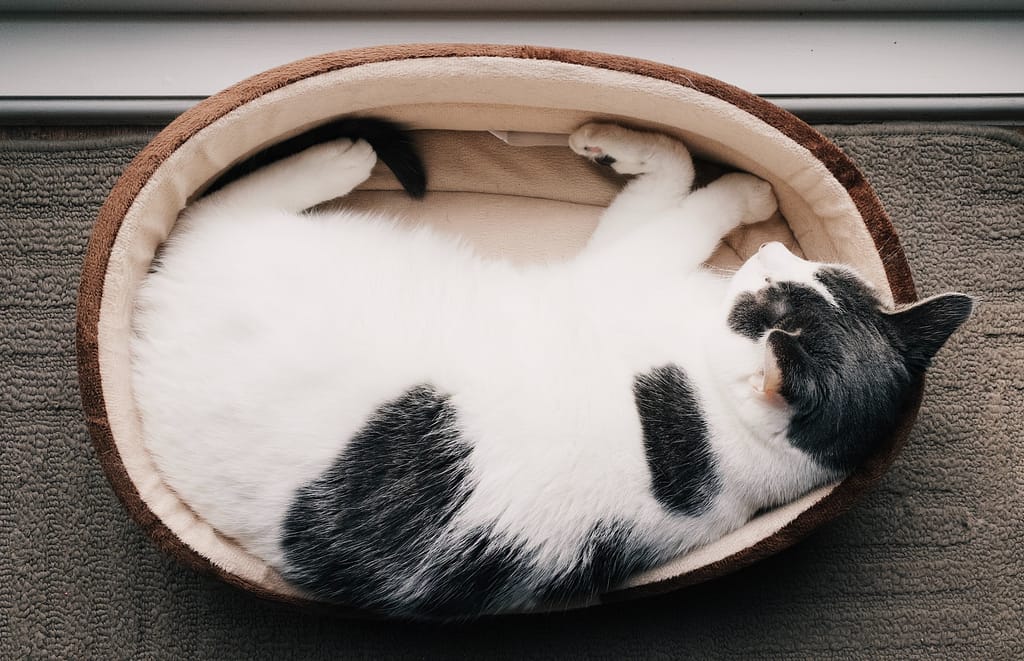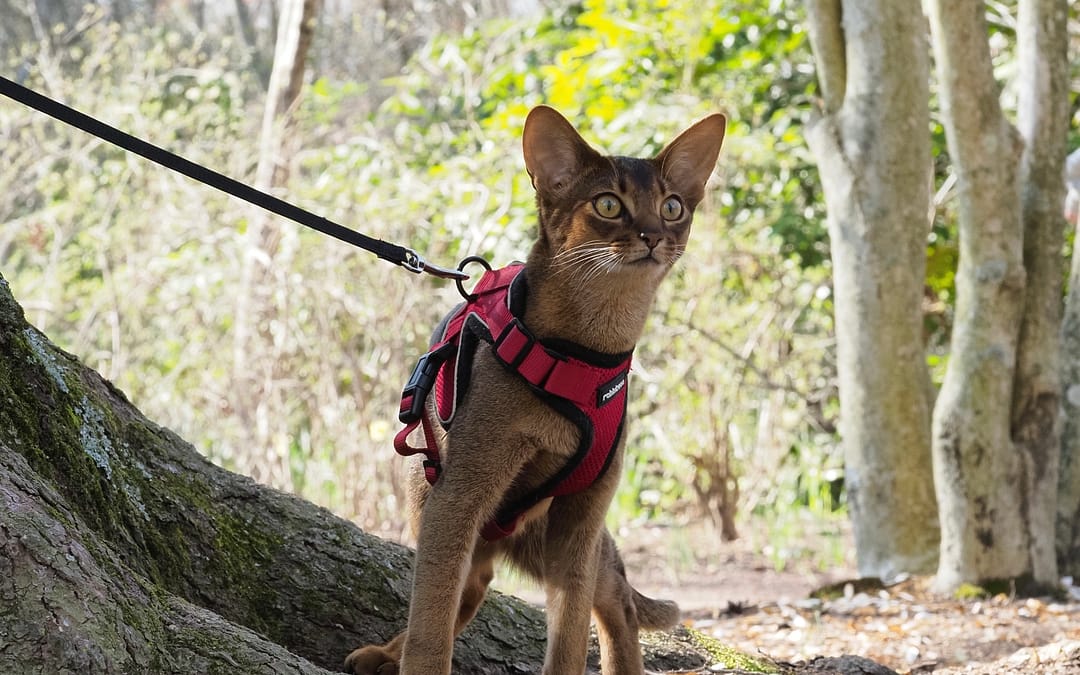This article may contain compensated links, please read our disclaimer for more information.
A lot of people take their dogs out RVing with them and have an absolutely wonderful time. Yes, RV travel with pets is a blast, but dogs aren’t the only kind of pets who can have a good time living the RV life. RVing with cats is also fantastic and can actually be pretty useful as well.
You see, cats provide comfort after a long day of sightseeing or when things go wrong, and they can ward off pests such as mice. They are playful and often silly and add an element of fun to even the more mundane aspects of RV travel. Some cats even enjoy going out on walks, meaning they can do a bit of outdoor exploring with you!
Of course, if you’re going to go RVing with cats, you really should go in prepared. That’s where this article comes into play. Below, we’ve listed 5 things you should know before you hit the road with your furry friend. Check off these boxes and you’ll be well prepared for your kitty-cat RV adventures.
Get Your Kitty Acclimated to Travel
First, you will want to make sure your cat is comfortable traveling in a vehicle. After all, cats don’t usually do a whole lot of riding in cars, and putting them in a moving house-on-wheels or even the back seat of a truck could be quite frightening. It could also lead to car-sickness, something nobody wants to deal with while on a long road trip.
For this reason, it’s definitely a good idea to take your kitty on some short car rides before you head out on a trip. Start small and work your way up to longer trips. It’s also smart to take the cat out on a short drive in the motorhome or truck that you will be RVing in so they can get used to that particular vehicle before you hit the road.

Prepare the RV for Your Feline Friend
Another important thing to do before RVing with cats? Getting the rig ready to go. Your cat is a part of the family after all, and they deserve to be comfortable and happy in your tiny home just as much as you do.
Set up a cozy nook where your kitty can hide out if they need privacy. Provide a scratching post to give them someplace to groom their claws and ideally protect your RV furniture. Provide toys and find pet bowls that travel well. You will also need to buy a covered litter box to help contain litter and find a spot for it to live (we recommend putting it under a bed or dinette seat and adding a pet door for the cat to go in and out of).
Lastly, we highly recommend going through the RV and cat-proofing everything. Remove chemicals that could be dangerous and make sure all window and door latches are shut tight to prevent your cat from getting out. Look around and make sure there isn’t anything else that could cause a curious cat harm, especially if your feline friend is still a kitten who tends to get into things.
Invest in a Harness and Leash
In addition to the things mentioned above, we highly recommend investing in a harness and a leash. Most campgrounds will not want you to allow your cat to roam freely, and even in boondocking spots, letting them roam can be risky. The harness and leash come in handy for giving your cat a chance to spend time outdoors without giving them total free range.
Some cats really enjoy exploring while on the leash and will even go out walking like a dog would. Others might prefer hanging around the campsite on the leash. Either way, having these items on hand is definitely a good idea.
Consider Where Your Cat Will Ride
Next up: Figuring out where the cat will ride on travel days. First, we must point out that no pets or people should ever ride in a trailer or fifth wheel. This is extremely dangerous for a number of reasons. Therefore, if you have any type of trailer, you will need to make space for your kitty in the tow vehicle along with you.
Many people allow their cats to wander the motorhome or truck while they drive. This is fine if your cat is relatively calm and you know they won’t bother the driver, but if your cat has a tendency to get spastic or get in the way of what the driver is doing, you might need to put your kitty passenger in a kennel or on a leash. This will prevent a cat getting under the brake pedal or on top of the dash while you’re driving, thereby avoiding a potential major accident.
Get Set Up with a Veterinary Chain
By now your cat has become acclimated to vehicle travel, the RV has been set up for them to be comfortable and safe, and you’ve figured out where the cat will ride. The last thing you need to take care of before you go RVing with cats? Veterinary care.
If you’ll only be taking short trips with your cat, this likely isn’t something you have to think about. That said, those who plan on full time RVing with cats should get set up with a veterinary chain such as Banfield or Petco, which would allow you to take your kitty to the animal doctor anywhere. Having a subscription to a virtual vet service such as Pawp can also be helpful, and you always want to carry a copy of your cat’s records and know where the nearest emergency vet is.
Getting set up to go RVing with cats does take a bit of work, but nothing can top being able to take your feline friend out on the road with you. Once you’re out there, be sure to maintain your usual routine and we’re betting your kitty will do just fine exploring this beautiful country with their favorite humans.
Join Fulltime Families
Fulltime Families Members get access to the best resources, community and discounts.
Fulltime Families is a participant in the Amazon Services LLC Associates Program, an affiliate advertising program designed to provide a means for sites to earn advertising fees by advertising and linking to amazon.com, amazon.co.uk, amazon.ca. Amazon and the Amazon logo are trademarks of Amazon.com, Inc. or its affiliates.


